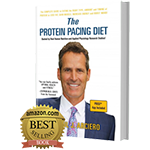Just the other day my brother-in-law asked if I knew about “slow” vs. “fast” food. Of course I said “yes” because I’ve been a proponent of the “slow food” philosophy for years. He wanted more information, so he asked me to explain.
Many people are familiar with the term “fast food”. Essentially, “fast food” is exactly what the name implies – food that’s been (mass) produced faster than it’s ‘natural’ life cycle through the use of artificial stimulants such as fertilizers, over/forced-feeding methods, pesticides, hormones, growth factors, genetically modified organisms, etc.
Fast food is the main staple in “fast food” restaurants and convenience stores, but it’s also abundant in traditional grocery stores.
Fast food comes in the form of conventional produce (fruits, vegetables, grains), animal products (milk, eggs, meat, etc.) and just about every pre-packaged, processed food.
Whatever the shape, size and type of fast-food, it’s usually been mass-produced in tightly confined living quarters such as a cage or feed lot, or in high yield single-crop farms.
Ironically, the shortened and stimulated production “lifecycle” of fast food results in a strangely prolonged “shelf-life”, once the food is harvested and brought to market. In other words, fast-food is produced quickly but lives long.
Herein lies the hidden danger of “fast food”. The longer than normal shelf-life wreaks havoc on the human body because the harmful chemicals used to protect and stimulate the growth of the vegetable, fruit, grain, or animal gets passed on to the cells in our body. Many experts believe these synthetic chemicals contribute to the current plague of modern-day diseases, such as cardiovascular and metabolic disease, certain cancers, as well as inflammatory and neurodegenerative disorders.
I call it the “fast food paradox”… a shortened lifecycle and a prolonged shelf-life (after life).
Slow food, on the other hand, is the exact opposite. It includes foods that have been grown and raised without the use of harmful toxins and artificial growth factors and protectants, and thus require a longer lifecycle to grow and mature. Once they have undergone their natural course of growth, their shelf-life is usually very short.
Examples of slow food include local and/or organic produce, free-range, grass-fed beef, dairy, eggs, and poultry, as well as most wild seafood. You’re probably thinking, if it’s local it must be “fast”? Actually, local produce (vegetables and fruits) and animal-based products mature according to the timeline which nature intended. Therefore, it comes to market and, eventually your dinner table, long after conventional food sources arrive.
Slow food is characterized by an extended, natural lifecycle and a brief shelf-life (after life) so you need to re-stock more often (this is a good thing). As such, there is limited, if any, exposure to harmful toxic residues entering our cells.
Slow food is rich in nutrients and other healthy chemicals called antioxidants and polyphenolic compounds, all of which protect our body from disease.
Local farmers markets, community-supported agriculture (CSA), home-gardens/farms, and oceans are ideal sources for much of your staple food items. These are also where you will find the healthiest sources of “dirty” whole foods. “Dirty” means, most of the food we eat should come directly from the earth and sea – think vegetables, grains, beans, fruits, seeds/nuts, and animal foods (fish, meat, eggs, dairy).
Much less of the food we eat should come from a “clean” wrapped package. Fast-food often appears sterile, refined, and shiny, and is referred to as “clean” food. Some health professionals confuse “eating clean” with eating healthy. However, “clean” applies much better to the fast-food production process and should be minimized.
To achieve optimal health – eat slow and dirty food often!

